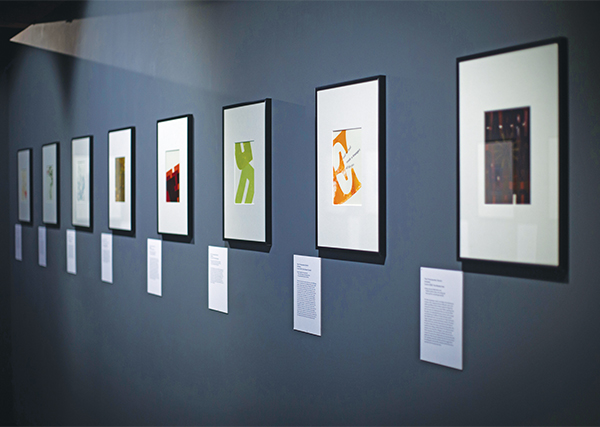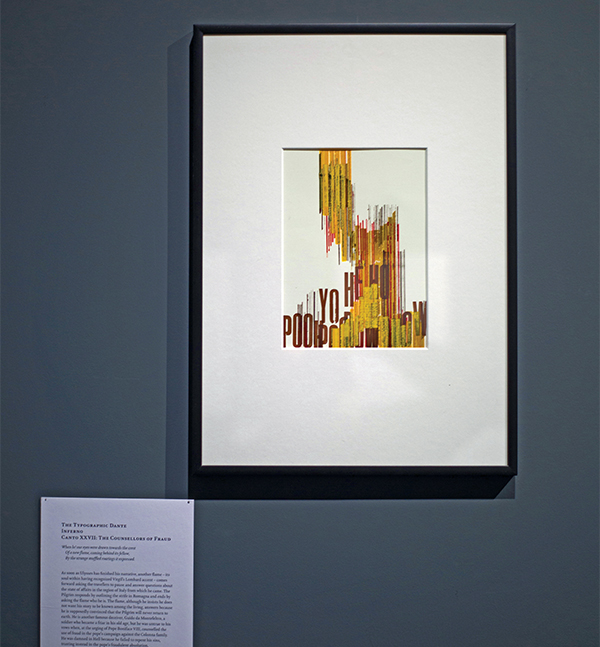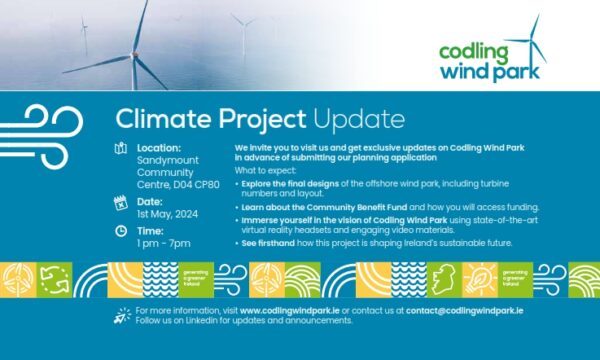
Images courtesy of the National Print Museum.
The National Print Museum at Beggar’s Bush Barracks recently hosted an exhibition of creative print materials based upon Dante Alighieri’s epic 14th century narrative poem The Divine Comedy.
The Typographic Dante is the result of an ongoing project by graphic designer Barrie Tullett and consists of texts from Dante’s masterpiece with accompanying typographical designs inspired by the text’s narrative.
All the exhibits were created by employing obsolete printing technologies, which include wood and metal letterpress printing and mechanical typewriters and Letraset, so as to evoke various scenes and atmospheres from the poem’s narrative.
Dante’s Divine Comedy is widely considered to be one of the seminal works of western literature. The poem traces the Florentine poet’s imaginative journey from Hell through Purgatory and Paradise and is considered among Christian theologists to be a masterful allegorical description of the soul’s journey towards God.
The text has inspired generations of writers, including Chaucer, Milton and Tennyson. British Romantic Era poet and visual artist William Blake’s illustrations of scenes from the poem helped introduce Dante as a major literary figure to the English-speaking world.
Irish writers inspired by Dante’s epic include James Joyce, Samuel Beckett and Seamus Heaney, and internationally renowned Belfast poet Ciaran Carson has created his own critically acclaimed translated version of the poem’s first section The Inferno.
CEO of the National Print Museum, Carla Marrinan, explained to NewsFour how the Dante exhibition fitted in with the museum’s mission to collect, document, preserve, exhibit, interpret and make accessible the material evidence of the printing craft while fostering associated skills of the craft in Ireland.
“Barrie Tullett works with obsolete technologies and at the National Print Museum we know a thing or two about obsolescence,” she added. “The exhibition comprises of two sections, Inferno and Purgatory. Inferno is produced by letterpress, which is the type of printing that the Museum concentrates on. Barrie Tullett explores the typewriter as a printing press and produced Purgatory through the medium of typewriter art. This really interested us and we have had the opportunity to dust off the Museum’s typewriter collection and put it on display again! The exhibition appealed to audiences of Dante and Italian literature, typography and design and printing.”

Images courtesy of the National Print Museum.
The National Print Museum opens 9am to 5pm on weekdays and 2pm to 5pm on Saturdays and provides tours of exhibits for visitors. The museum offers a free guided tour of their permanent collection every Sunday at 3pm, and no booking is required for this event. Information on exhibitions and upcoming events can be found on the museum website at: https://www.nationalprintmuseum.ie.
By Harry Bradley



